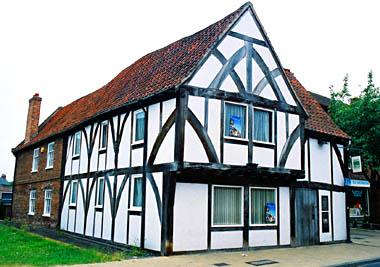
Bowes Morrell house, York, street end
Photo © S. Alsford
What is now called the Bowes Morrell house is a fine example of a late medieval house, even though its layout is atypical. It is a fortunate survival in Walmgate, in the Late Middle Ages a built-up street leading to the southeastern gate (or bar) of the city, but not today a part of the city where much has survived in terms of medieval domestic buildings.
Closer to Walmgate Bar stood the church of St. Peter-in-the-Willows (demolished 1549), which archaeology has shown to have had an extensive cemetery on its west side. In 1396 two chaplains acquired royal licence to found a chantry in the church and support it from revenues from four houses to be built around the edges of the cemetery. One of these was to front on Walmgate and was described as 90 ft. long by 30 ft. wide; this is suspected to be the Bowes Morrell house.
The Bowes Morrell house originally comprised a two-storey range (seen clearly in the above photo) and a hall, seen on the left-hand side of the range in the photo above, and from the side in the photo below. An extension was built onto the hall in the sixteenth century (photo below, right-hand side) and in the seventeenth century a brick extension was built to the rear of the house (photo above). At the ground level the hall was open to the adjacent range. It has been speculated that, given the unusual floor-plan, the house may have served as the church vicarage.
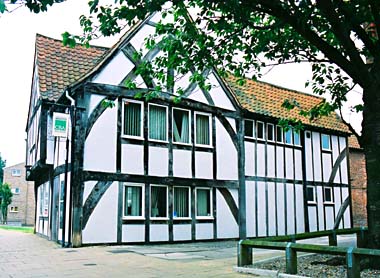
Bowes Morrell house, York, side view
Photo © S. Alsford
The Bowes Morrell house, which is named for a York family that had been very much involved in the protection of medieval buildings in the city, is now the headquarters of the Council for British Archaeology. (I am grateful to the CBA for providing me with information about the house.)
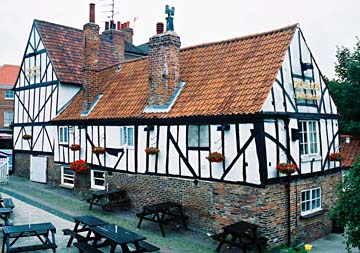
The Red Lion, York
Photo © S. Alsford
York is one of the better endowed English towns for the survival of late medieval buildings. The Red Lion pub (technically on Merchantgate, but originally off Walmgate) is believed to date back to the fifteenth century and may have always been a tavern. York's famous Shambles has a number of examples of medieval buildings, which well illustrate the use of jettied upper storeys to win more floor-space (sometimes to the nuisance of travellers on horseback or sitting atop carts), as well as the fact that three-storey houses were becoming more common in the fifteenth century.
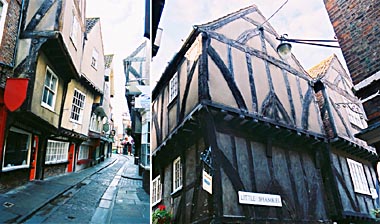
Buildings in the Shambles and Little Shambles
Photos © S. Alsford
The buildings that have survived mostly represent residences of the wealthier citizenry, or buildings built to last because they were intended as renters or almshouses (e.g. Lady Row). For the flimsier and smaller dwellings of the labouring class, we must rely on archaeological evidence and reconstructions such the diorama below, showing an Anglo-Saxon woodman and his hut.
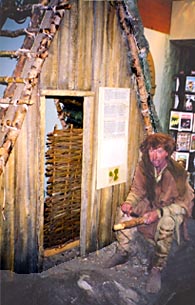
Exhibit at the Epping Forest Information Centre
Photo © S. Alsford